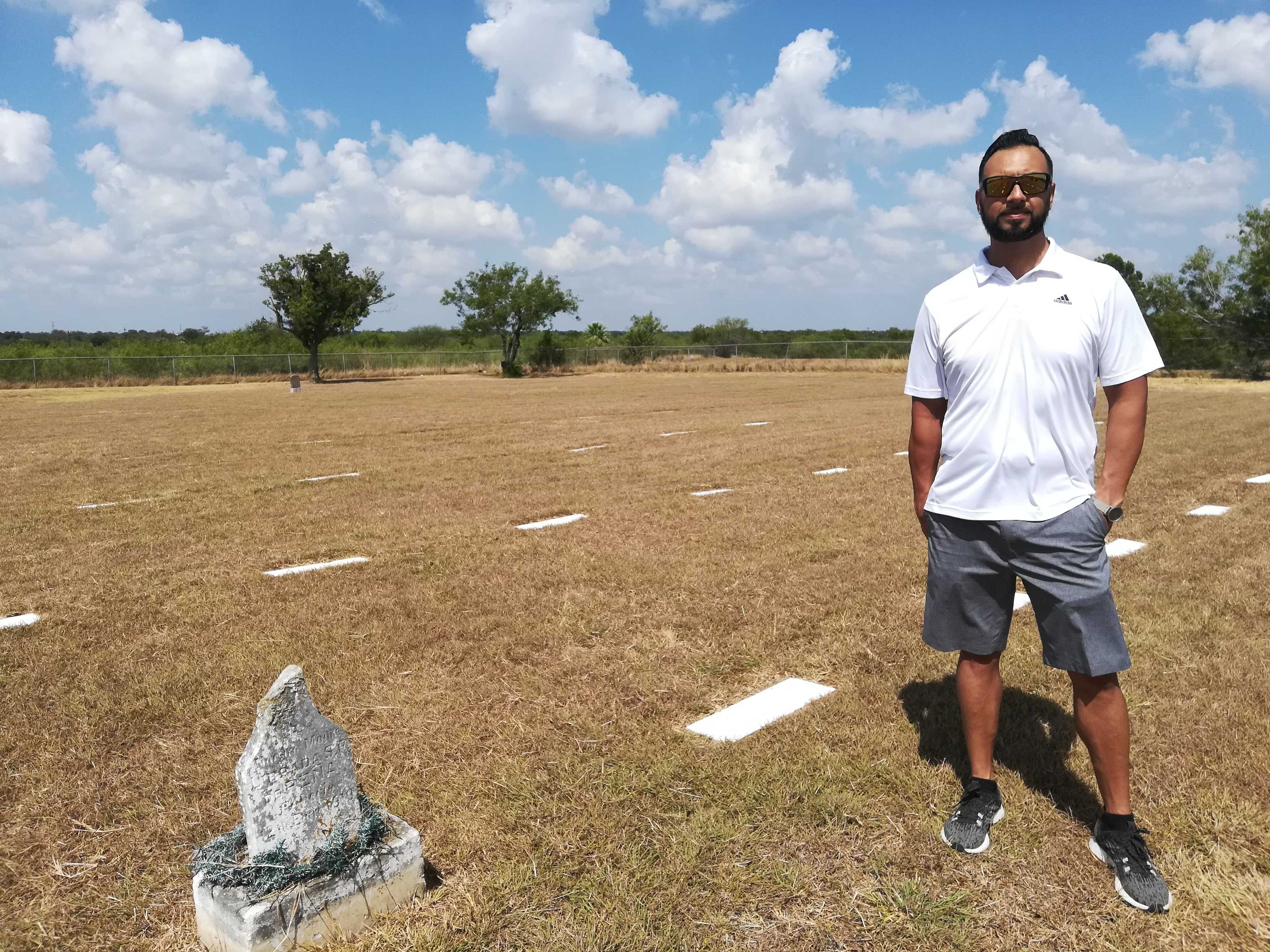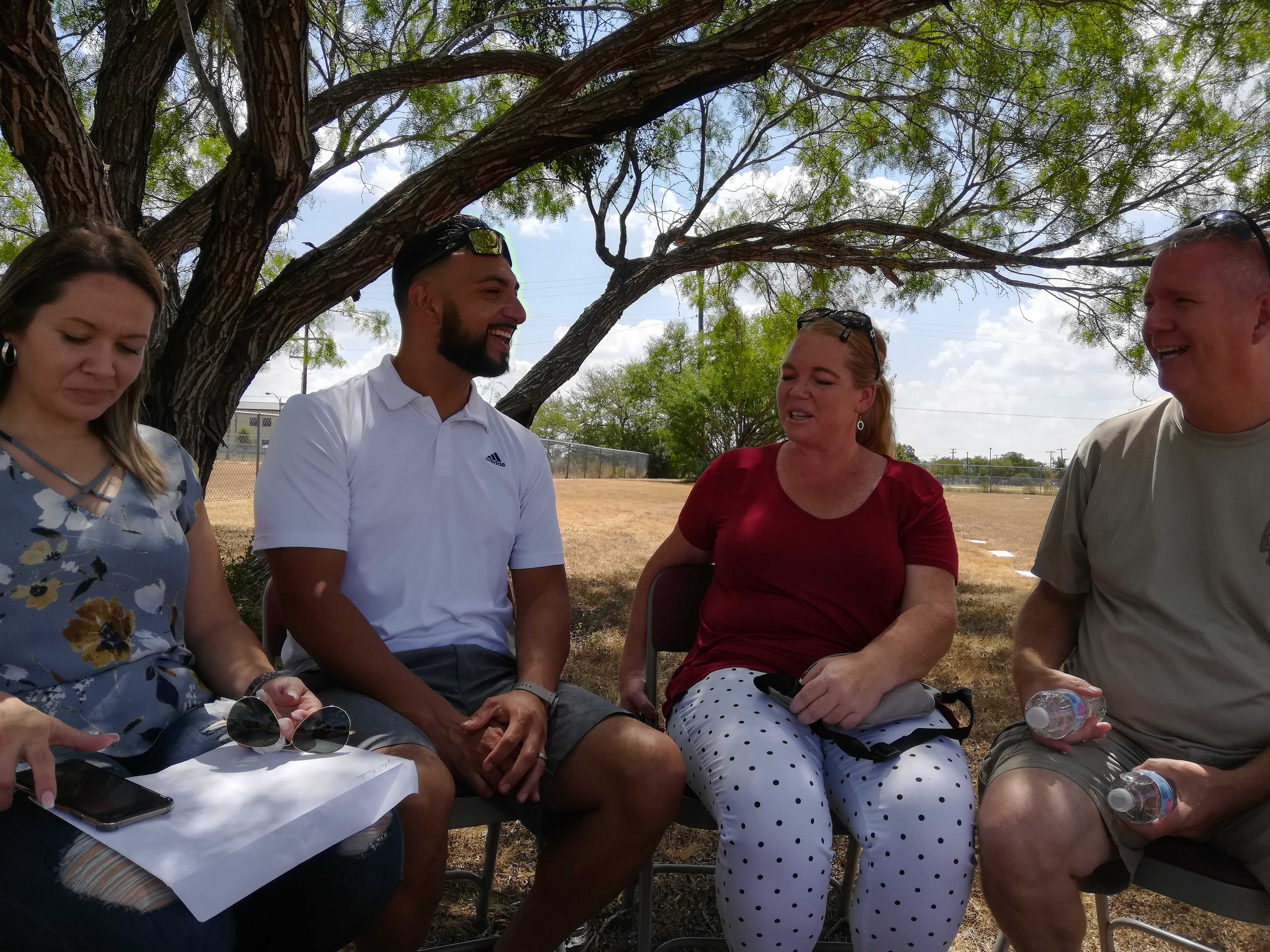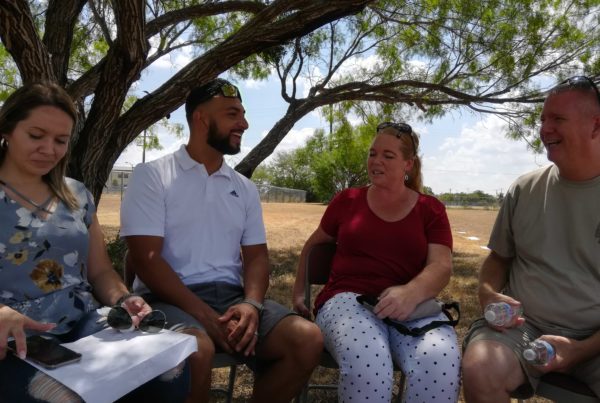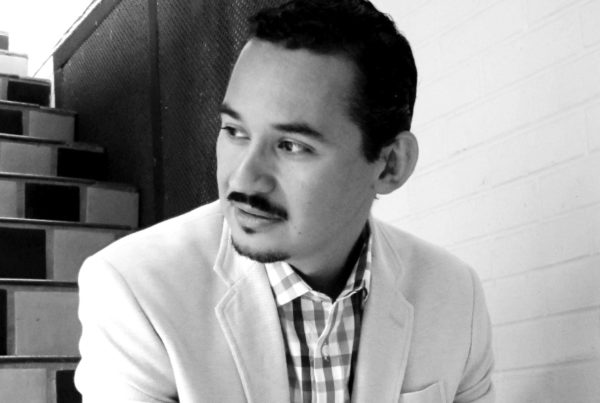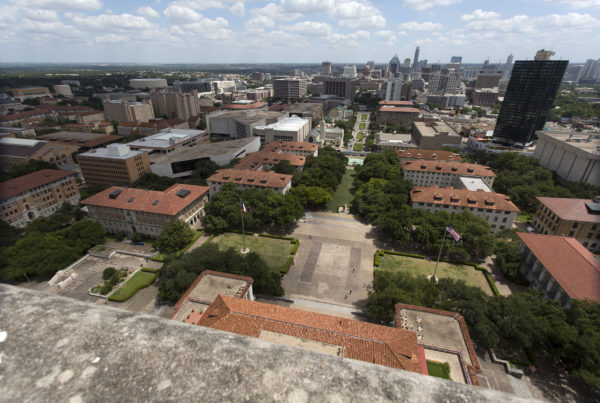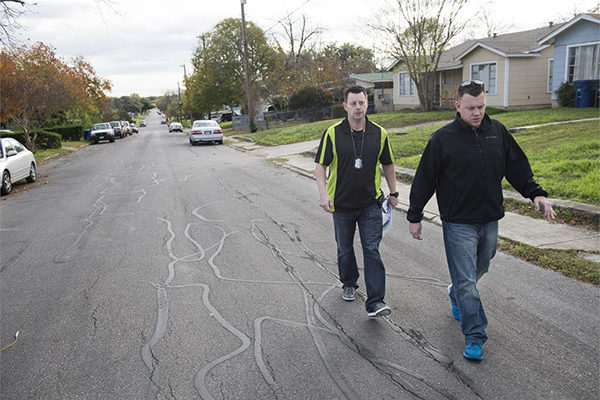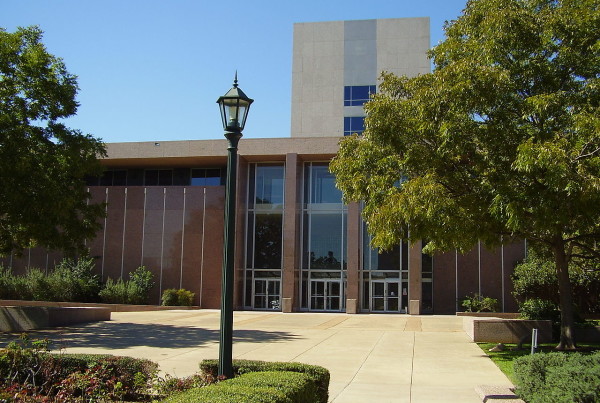Shame, societal norms, a lack of information – all of these things could have been reasons why Jason Lucadou didn’t hear much about about his great-great-grandfather Jules Lucadou growing up. Eventually, he did learn about Jules’ life after seeing his 1919 death certificate. That discovery led Lucadou to travel from his home in Houston to the San Antonio State Hospital cemetery to see where Jules is buried.
“So, this is about the – approximately the area where he is in, a general area where he’d be at,” Lucadou says, pointing to Jules’ approximate gravesite during a visit in September.
For much of history, including during the early 20th century, few people discussed mental health and treatment options were limited. Still, Texas state hospitals treated thousands of people over the years. At San Antonio State Hospital alone, 1,100 people are buried in its cemetery. That means they died while in residence there. But only a handful have headstones; Jules Lucadou’s grave does not.
Until Jason Lucadou found Jules’ death certificate, the only information he had about him was from an 1896 newspaper article that mentioned Jules having an “illness.”
“It says: ‘Mr. Jules Lucadou has been seriously ill and is in still precarious state of health.’ … To me, that applies to his visiting the facility where we are at here today,” Lucadou says.
Hospital records show that just a few months after the article, Jules left his home in Brownsville, where he lived with his wife and children, and admitted himself into San Antonio State Hospital – then known as the Southwestern Insane Asylum.
“I know he was here very long; the records indicate he was here approximately 23 years,” Lucadou says.
That amounts to about one-third of Jules’ life spent in the state hospital.
Lucadou says Jules started out as a schoolteacher in 1870, and during the mid-1880s he became county tax assessor. That public service job meant that there were many newspaper articles about him, which helped Lucadou with his research.
News articles indicate that Jules was a first-generation Texan – the son of a French man and a Swiss woman. He was fluent in several languages, including Spanish. At some point during his working life he even became an immigration judge.
With so much documentation about Jules’ life, Lucadou found it suspicious that relatives left Jules off the family tree. But for many families, a relative receiving treatment at a state hospital was tantamount to them being locked away for good – so, in some cases, they were forgotten.


